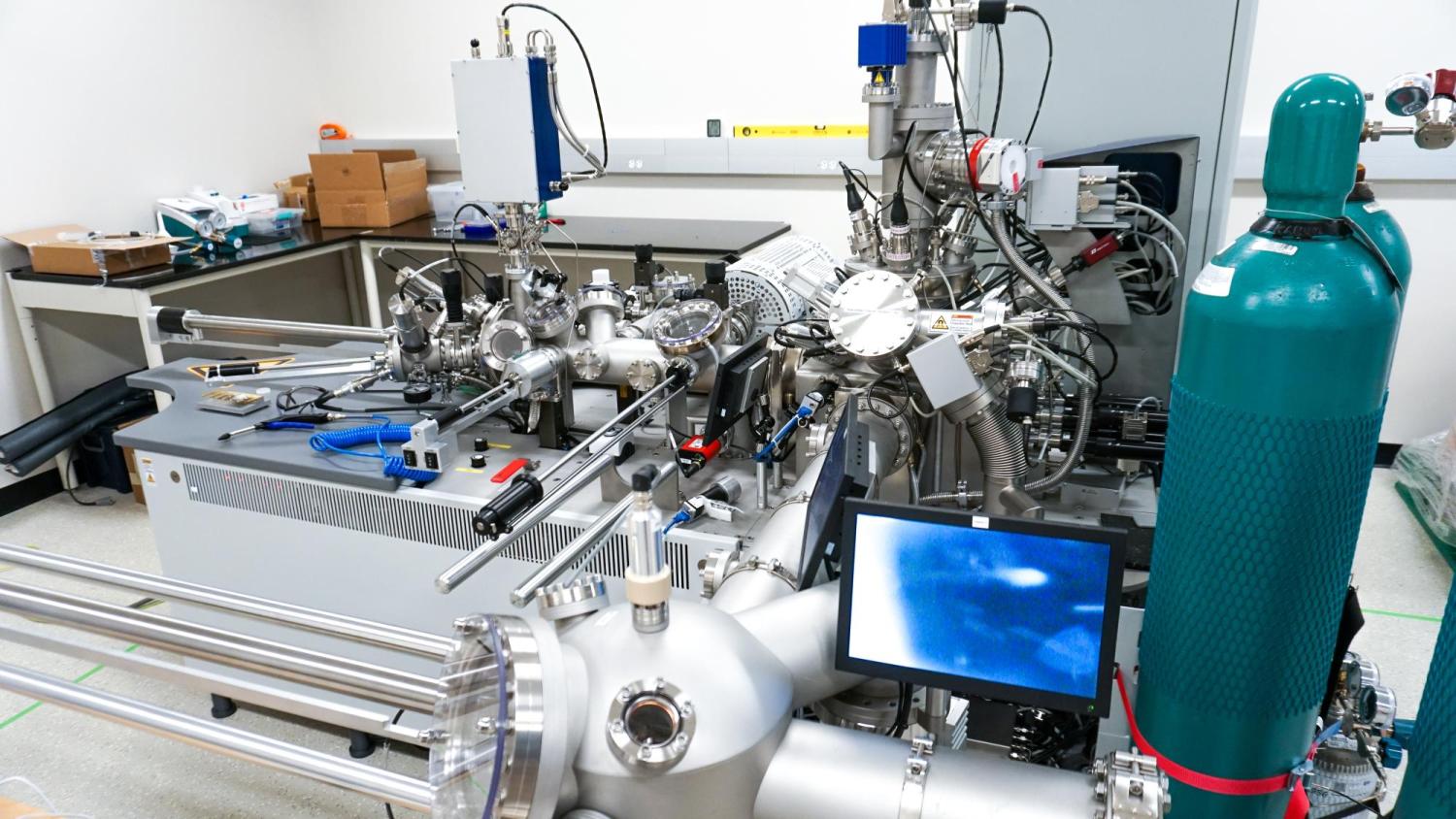High-Sensitivity Low-Energy Ion Scattering Spectrometer will be a transformative resource for materials research at CU Boulder

The HS-LEIS system in the SEEL building on East Campus.
CU Boulder’s East Campus is now home to the High-Sensitivity Low-Energy Ion Scattering (HS-LEIS) Spectrometer, a tool researchers from across the Rocky Mountain region will use for advanced materials characterization and analysis.
Because materials interact with the environment through their surfaces, knowledge of surface properties is critical to understanding structure-function relationships of existing and bespoke, next-generation materials designed for a variety of electronic, optical, biological, chemical and other applications, including functional coatings, photovoltaics, catalysis and more.
Housed in the Sustainability, Energy and Environment Laboratory building on East Campus, the HS-LEIS is the culmination of recent advances in detector design for surface analysis. The device can provide the most sensitive and selective methods for non-destructive, property-dictating, top-atomic-layer surface composition analysis.
“Coupled to this dual instrument system are several sample environments, such that one can expose materials to reactive atmospheres, high temperatures, electrochemical potential and other environments to examine their effect on the surfaces,” said Assistant Professor Adam Holewinski, the lead principal investigator of a team of five researchers who submitted the proposal to bring the instrument to CU Boulder. “This has turned into a rather unique, customized surface analysis platform with broad applicability.”
The HS-LEIS is currently the only device of its kind in the Rocky Mountain region, and only the second in the U.S. It is also unique in that it is complimented by an X-ray photoelectron spectroscopy system, to which it is physically tethered to perform sequential analysis on samples, as well as its unique complement of electrochemical cells. The platform also allows for interfaces with a glass reaction chamber that can reach temperatures up to 1200 degrees Celsius and handle corrosive and reactive gases.
Massimo Ruzzene, the associate dean for research in the College of Engineering and Applied Science, said materials research is and continues to be a strength of our college and the university as a whole.
“This instrument will be a new cornerstone in that area and my hope is it will spur exciting interdisciplinary research efforts on campus and in the region for years to come,” he said.
The acquisition of the HS-LEIS was made possible through a collaborative effort by a group of materials-focused researchers from the Department of Chemical and Biological Engineering, the Department of Chemistry, the Materials Science and Engineering Program and the Renewable and Sustainable Energy Institute. In 2019, co-principal investigators Tanja Cuk, Steve George, Adam Holewinski, Mike McGehee and Will Medlin developed a proposal that they submitted to the National Science Foundation, which ultimately funded the creation of the platform.

